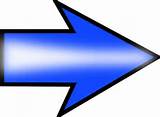He was also a pioneer in wireless, and an advocate for
its use in military affairs. He joined the local militia
(despite his physical disabilities - he was epileptic)
and later rose to become a major.
His main civilian activity, however, was that of a journalist.
He owned a publishing company, Building Limited, and edited
and published a regular building and town-planning publication,
Builder. He later, after the war, edited a journal,
Soldier, for the main ex-servicemen's organisation
in Sydney. He also wrote and illustrated his own books
and pamphlets.
(It is worthy of note that the firm of WS Friend &
Co, which specialised in builders' hardware, advertised
is every issue of Builder, just as they did in
every issue of King and Empire. It is likely that
Taylor and his architect wife were on familiar terms with
the Friend-hardware family, as well as with Rosenthal.)
Taylor's first "connection" with our search
for the truth about Lawrence and Kangaroo was where
his historic first flight took place, which was from a
ridge of sand across the street from "Billabong",
the end-house in Ocean Road, North Narrabeen (see a photo
of Taylor in mid-flight, below).
In fact, the Shultz house had been the "base"
for that first, historic "flight". The glider
had been "put together" there (with the help
of a 16-year-old boy called Edward - later Sir Edward
- Hallstrom, the Sydney refrigerator tycoon), and was
kept in the end-house garage.
However,
the main connection between Taylor and the quest for the
truth about Lawrence and Kangaroo is the fact that
Charles Rosenthal was, according to contemporary newspaper
reports, also present that historic day at Narrabeen in
December 1909, and had witnessed the flights.
Rosenthal may have even been there as an "official"
observer. At the time he himself was a major in the militia,
an artillery officer, and thus very interested in the
military potential of "spotter" aircraft.
Some months later, to see for himself what military use
such a machine might be put to, he, too, took to the air
- despite his very-much-heavier-than-air bulk - when Taylor
added a motor and propeller to his glider. (Rosenthal
crashed on a flight to Parramatta, and was thereafter
banned from flying.)
Rosenthal, as a leading Sydney architect, would have been
well-acquainted with Schultz and Taylor - not only professionally,
but probably also personally. He had been, the Schultz
relatives recently confirmed, a regular visitor to their
house at the end of Ocean Road, North Narrabeen, as the
photograph below indicates.
It is highly likely that Taylor was also involved in the
King and Empire, the monthly journal of the King
and Empire Alliance, of which, in May 1922, Rosenthal
was the secretary and its leading light.
Although Rosenthal, as secretary (and later President)
of the Alliance, was the "titular" editor of
King and Empire, he would have needed professional
help to "put the publication together". The
most likely person to have done that - and also sell its
advertising - was his friend and fellow militia officer,
the Sydney journalist George Augustine Taylor.
Taylor was almost certainly either a member of the secret
army ("the garage") behind the King and Empire
Alliance, or at least privy to its secrets - especially
given that in the pre-war militia he was in military intelligence,
and was later inducted into to the regular army during
WW1 as a captain in the intelligence corps.
After the war, he continued to serve in a military intelligence
capacity in the peacetime militia, alongside his fellow
militia officers Scott and Rosenthal.
According to a contemporary report in the Sydney Morning
Herald, Taylor was among those who attended the launch
of the King and Empire Alliance in the Sydney Town Hall
in July 1920 - no doubt at the invitation of his military
colleague - and business associate - Major-General Sir
Charles Rosenthal, architect (and, no doubt, fellow-Mason).
